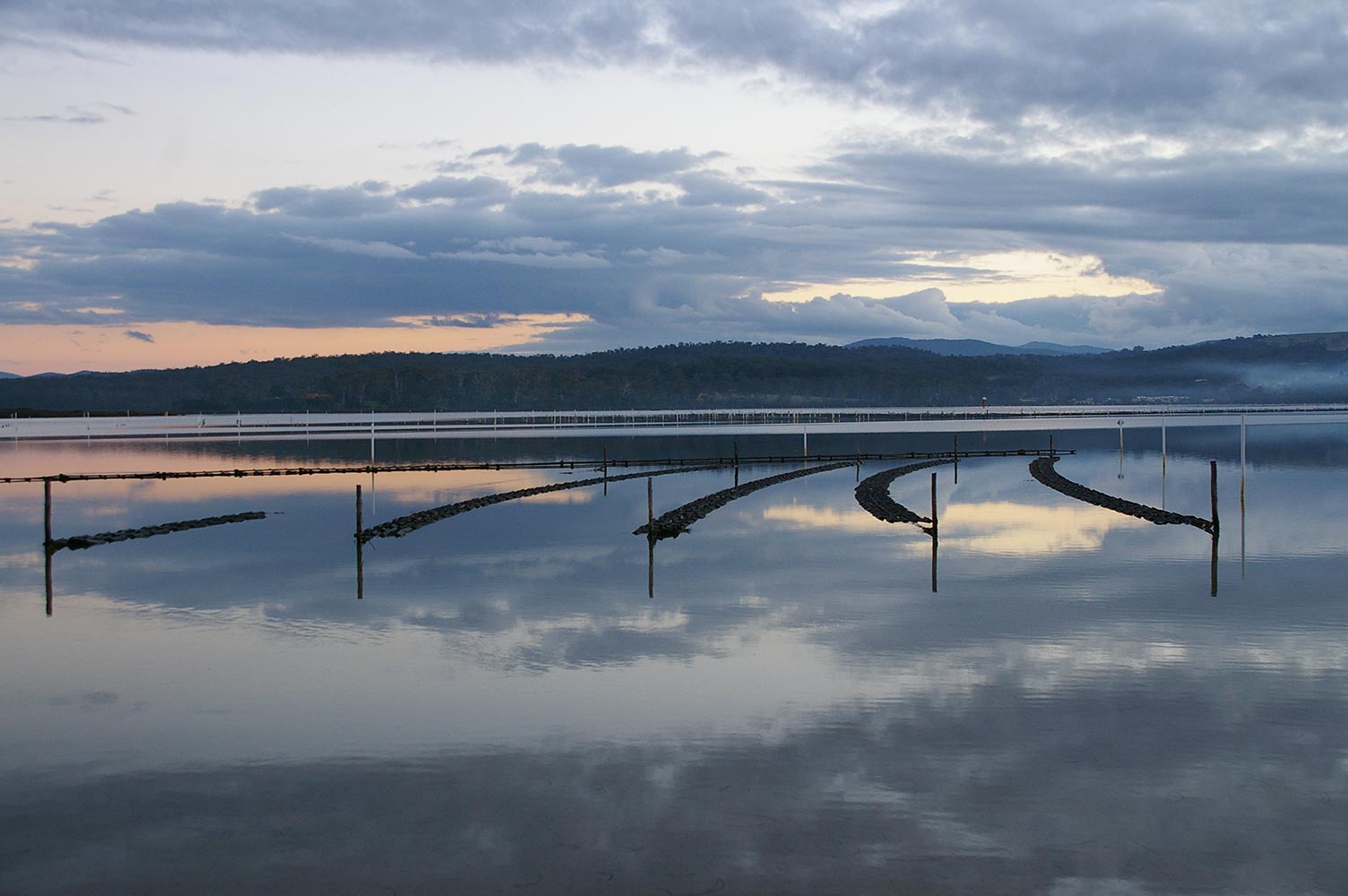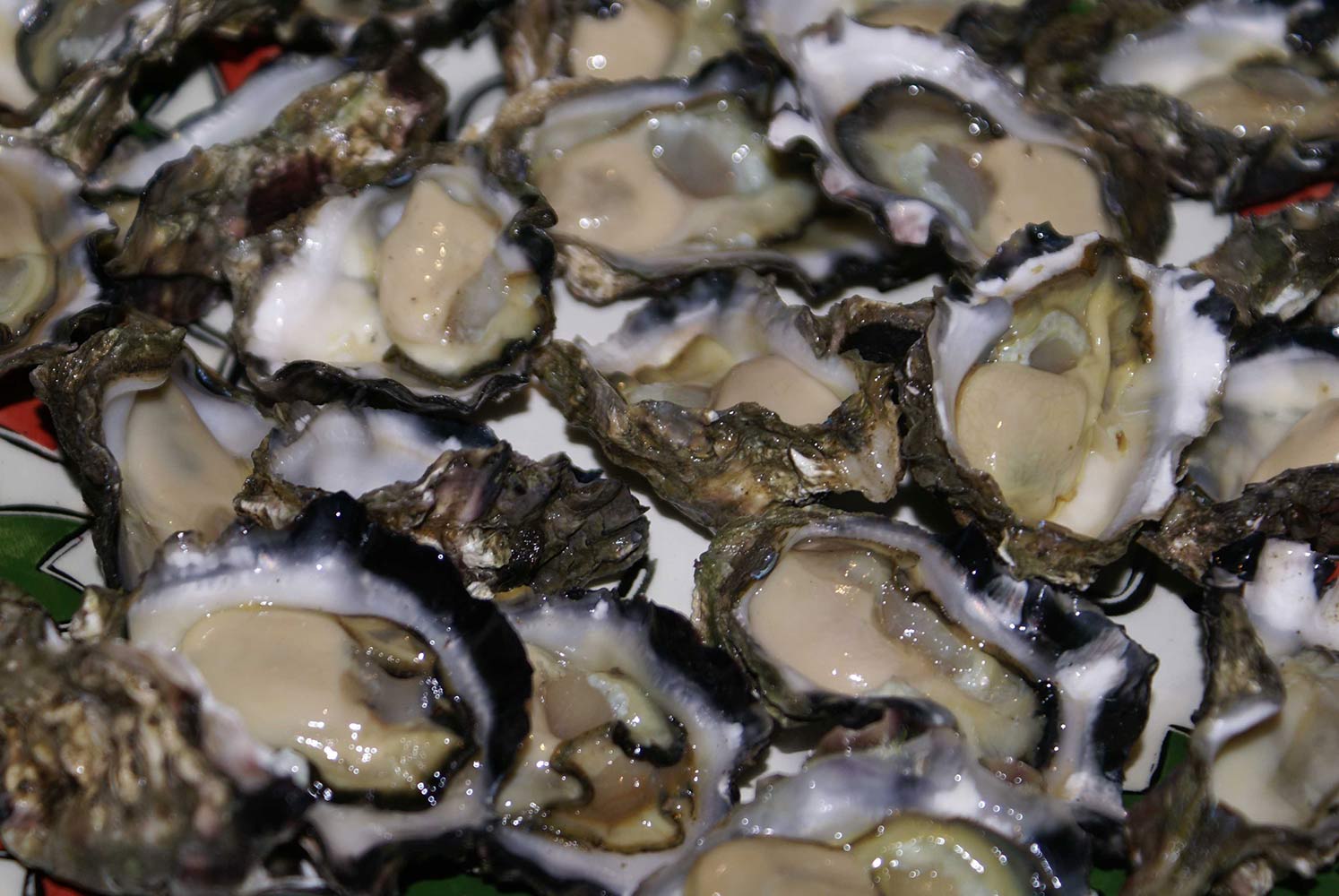Sydney rock oysters to the rescue!
With the Pacific Oyster Mortality Syndrome (POMS) affecting large numbers of the widely-farmed Pacific oyster over the past few summers, it’s predicted that oysters might be in short supply, and on the pricey side this Christmas. However, all hope is not lost! Pacific oyster farmers in South Australia are ramping up their production to try and compensate for the losses of Tasmanian stocks, and don’t forget about the other species of oyster commercially produced in Australia—the native Sydney rock oyster (Saccostrea glomerata).
The Sydney rock oyster is found from southern Queensland southwards to Victoria. It’s also farmed in Western Australia (with the recent outbreak of POMS in the eastern states, the WA farmers are heaving sighs of relief that a move to import Pacific oysters for farming was declined back in 2013).
The Sydney rock oyster, along with another native species, the flat oyster (Ostrea angasi), has been an important species in Australia for thousands of years—Aboriginal midden sites along the east coast are full of them, representing a long history of oyster collection and consumption. European settlers harvested oysters extensively by dredging the natural oyster beds—they were exploited for their gastronomic value and their shells were burned to make lime for mortar. The natural oyster beds were exhausted by the mid-1800s but Australia now has a solid oyster aquaculture industry. More than 5 million dozen Sydney rock oysters were sold in New South Wales alone during the 2015–16 period, and the industry was worth nearly $37 million.
While not affected by POMS, this species is susceptible to a condition known as QX (Queensland Unknown) disease—a parasite called Marteilia sydneyi that can infect the oyster. The parasite enters through the oyster’s gills and then takes up residence in the digestive gland. There it produces spores, which can destroy the oyster’s digestive system, meaning it loses its condition then starves to death. Potentially deadly to Sydney rock oysters, the parasite is not harmful to humans.

A lot of research has been done over recent years to develop QX-resistant oysters using selective breeding techniques. Research has also been conducted to develop triploid oysters—oysters with three sets of chromosomes instead of the normal two. Triploidy has already been successfully commercialised for Pacific oysters. Triploid oysters are sterile, so they don’t produce any spawn—this means they maintain their condition (make for better eating!) all year round. They also grow faster, as they don’t lose energy reproducing. The development of triploid Sydney rock oysters would see the time taken to reach market size reduce from 3.5 years to around 3 years.
So, how to tell a Pacific oyster from a Sydney rock? Well, you don’t want to walk over either of them in bare feet, but if you are able to choose, go for the Sydney rock oyster—the Pacific oyster shell is much ‘frillier’ (by frill we mean spiky sharp layers of calcium carbonate) so it’s more vicious to those tender feet. When opened, the actual oysters look a little different too—you can usually tell a Pacific by its thicker black mantle—the fringey-looing part on the edge of the animal, and the meat is generally a little paler.

According to the connoisseurs, they taste different as well. You’ll find that the Sydney rock has a ‘rich savoury flavour with subtle mineral and herbaceous finish’ while the Pacific has a ‘salty, sweet ocean burst and subtle herbaceous flavour’. And if you're really an oyster lover, there is a third option. Flat oysters are also being produced in oyster farms around the country, although in much smaller numbers. These oysters have a flatter, more circular shell. The oysters themselves are meatier, though also with a 'subtle mineral and herbaceous finish'. Oysters are a great source of Omega 3, and Sydney rock oysters are also high in selenium and iodine.
Although there are lots of recipes for cooking and flavouring your oysters, take it from the experts: oysters are always best eaten fresh and raw, with nought but a squeeze of lemon and a crack of pepper.





